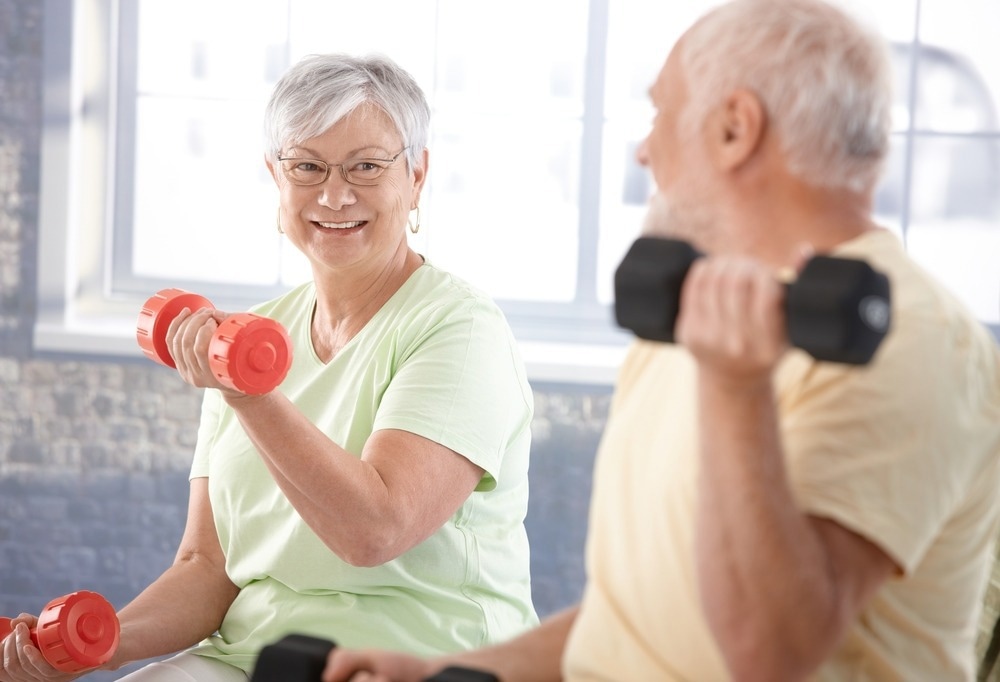I hate treadmills, they do nothing for balance recovery and fall prevention, and are boring as hell. So it is your doctor's responsibility to give you EXACT EXERCISES TO DO!
Which exercises might reduce pro-inflammatory and enhance anti-inflammatory cytokines in older people with mild cognitive impairment or Alzheimer's disease?
In a recent article published in Experimental Gerontology, researchers systematically reviewed English language publications from 13 electronic databases, such as PubMed/Medline, Google Scholar, and Web of Science.

They investigated which exercises might enhance anti-inflammatory cytokines and reduce pro-inflammatory cytokines in patients with dementia or mild cognitive impairment (MCI), as illustrated in studies using apt animal models and human participants.
Background
MCI is often considered the earliest symptomatic manifestation of Alzheimer's disease (AD), the most common cause of dementia. By 2050, AD might become so prevalent that one in 85 people will have AD worldwide. Cognitive deficits, neurodegeneration, b-amyloid (Aβ) deposition, neurofibrillary tangle (NFT) formation, and neuroinflammation are some of the characteristic manifestations of AD.
There is a need for biomarker panels to diagnose AD early. Their identification is also crucial because inflammatory mediators play an important role in disease pathogenesis and could inform the development of novel therapeutic strategies for AD.
About the study
In the present study, researchers performed a detailed systematic review to understand the effects of chronic physical activity on MCI or AD outcomes. They included studies using exercise, physical activity, or fitness training as an experimental intervention.
These articles had participants who either had AD, MCI, or dementia, examined cerebrospinal fluid (CSF), brain tissue, etc., and measured cytokines or other inflammatory or neuroinflammatory immune markers. The researchers also included all animal studies that responded to these criteria.
In the study assessments, the researchers examined the effect of physical activity, stratified based on its type, frequency, volume, intensity, and duration.
Results
The authors claim this is the first systematic study on physical exercise parameters in this context. Thus, the studies covered in this review showed inflammatory and anti-inflammatory cytokine levels after exercise in the intervention and control groups.
The included studies also combined results from 25, 11, and two articles exclusively related to animals, humans, and both humans and animals, respectively. They include 1249 animals and 789 human participants.
First, the researchers evaluated only animal model articles to find that physical exercise reduced pro-inflammatory markers in 70.8% of the models, especially tumor necrosis factor-alpha (TNF-α), interleukin (IL)-1β, and IL-6. In 26% of the animal model articles, the levels of the anti-inflammatory cytokines, viz., IL -4, IL -4β, IL -10β, IL -10, and TGF-β showed a marked increase.
In 40.8% of animal model studies, the effect on cytokine levels was positive post-treadmill and swimming exercises, whereas resistance exercise decreased pro-inflammatory cytokines. These three exercise types also promoted a marked reduction in Aβ amyloid plaques, pro-inflammatory cytokines, and microglial activation. Further, the researchers noted elevated levels of IL -4 after four weeks of exercise, through which the brain most likely compensated for Aß-induced upregulation of IL-6.
A low, moderate, or high treadmill exercise volume decreased IL -1β and a surge in anti-inflammatory cytokine IL -10 in blood serum. Furthermore, the study results showed that low-intensity endurance training reversed neuroinflammation.
Intriguingly, 73% of studies where authors induced AD in non-transgenic animals found a positive exercise effect on neuroinflammation. In 100% of articles, hippocampal Aβ injection was very effective concerning neuroinflammation.
Moving on to studies with human models, the researchers observed that chronic exercise was beneficial. In 53.9% and 23% of chronic exercise articles, they observed reduced pro-inflammatory and increased anti-inflammatory cytokines, respectively.
Accordingly, cycling, aerobic and multimodal exercises, and resistance training reduced several pro-inflammatory cytokines, e.g., IL -6, IL -15, IL -1β, and TNF-α. Even in older adults with MCI, three times per week of multimodal training for 16 weeks reduced blood serum levels of IL -6 and TNF-α.
Likewise, resistance training had multiple benefits. For instance, it improved their cognitive function by increasing insulin-like Growth Factor One (IGF-1) levels in the hippocampus. Similarly, aerobic and mind-plus-body exercises increased Brain-derived neurotrophic factor (BDNF), whereas cycling reduced small nucleolar RNA host gene 14 (SNHG14) expression to halt AD progression.
Conclusions
The authors emphasized that future studies elucidate the effect of exercise protocols on AD stages, from preclinical to severe. Similarly, understanding the correlation between cytokine levels and cognitive functions is crucial to managing neuroinflammation and cognitive decline.
Furthermore, future studies should have a larger sample size covering both genders where they compare groups doing two different types of exercise, rather than a sedentary group vs. an exercise group. It would enhance understanding of how forced physical activity accentuates dementia progression.
Nonetheless, this review remarkably showed the positive effects of chronic physical activity on the brain tissue of animals and humans with MCI or AD. Though the study results could help guide healthcare professionals, the authors cautioned that this efficacy was biological and not proven clinically.
- Ayari, S. et al. (2023) "A systematic review of exercise modalities that reduce pro-inflammatory cytokines in humans and animals' models with mild cognitive impairment or dementia", Experimental Gerontology, 175, p. 112141. doi: 10.1016/j.exger.2023.112141. https://www.sciencedirect.com/science/article/pii/S0531556523000621

No comments:
Post a Comment